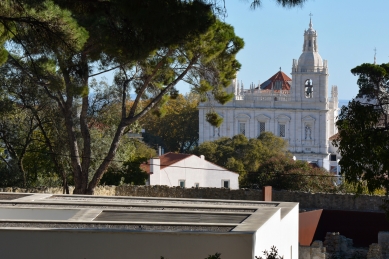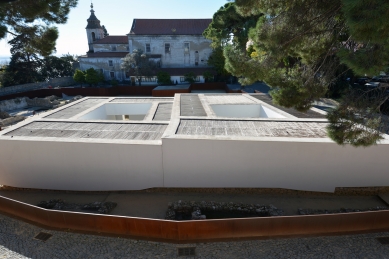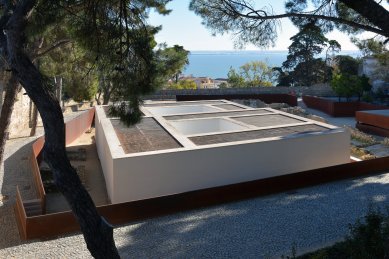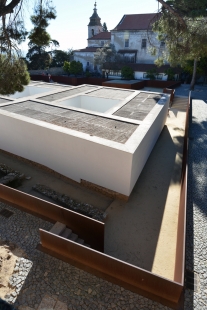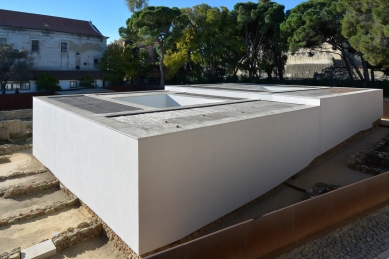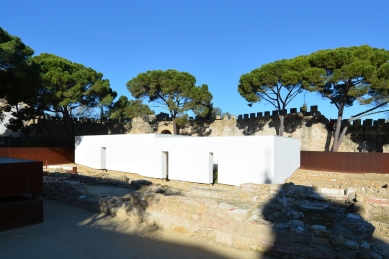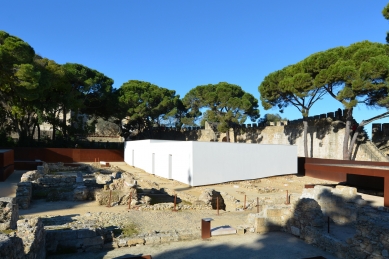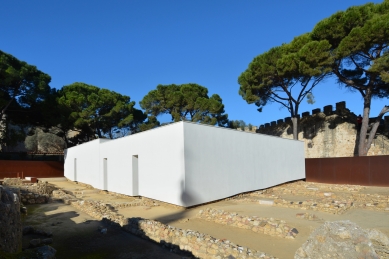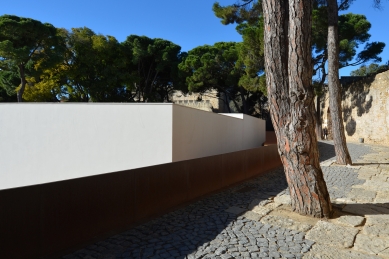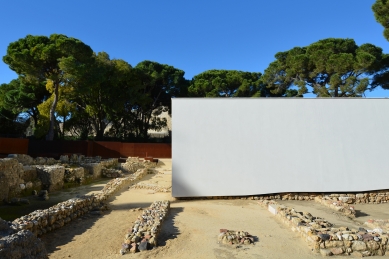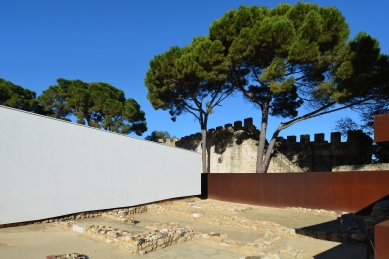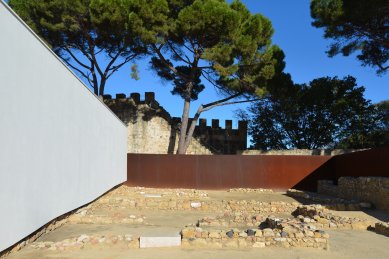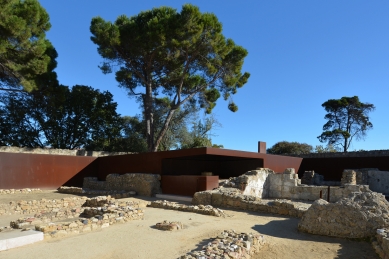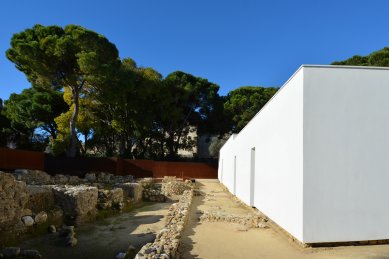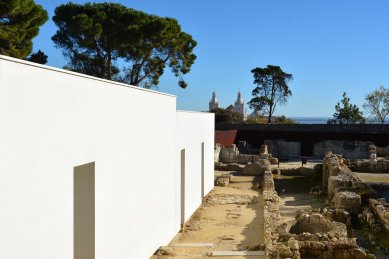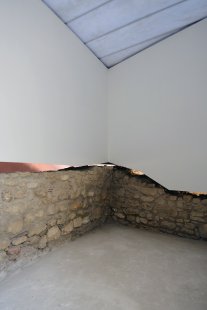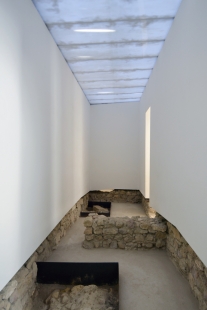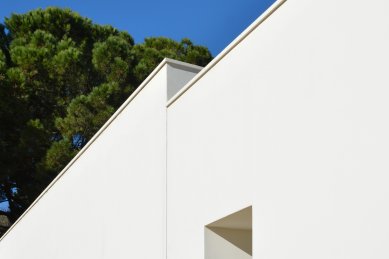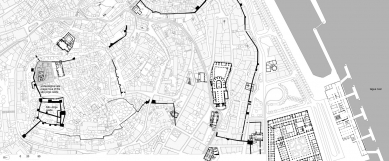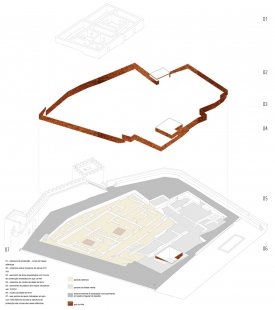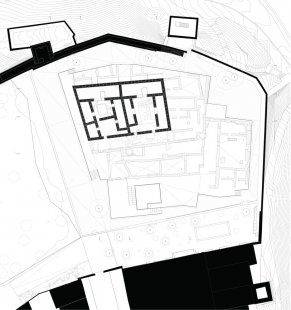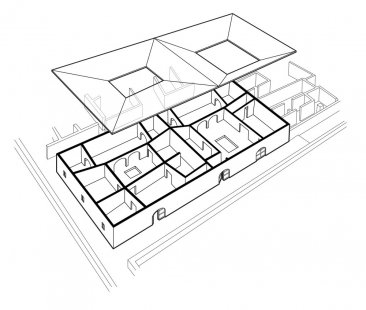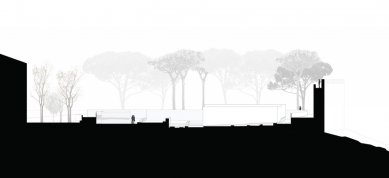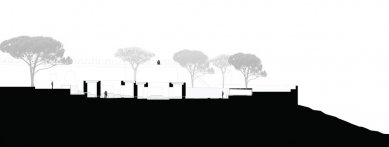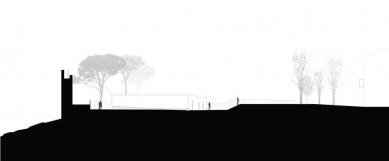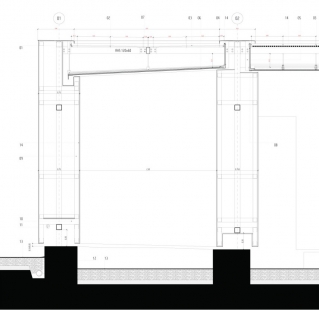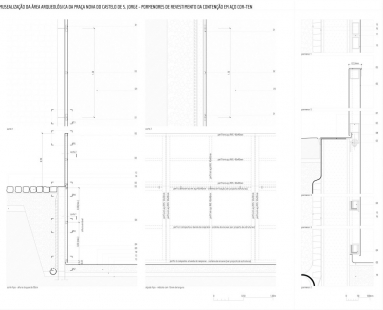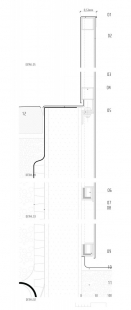
Musealization of the Archaeological Site of Praça Nova of São Jorge Castle
Musealização da Área Arqueológica da Praça Nova do Castelo de S. Jorge

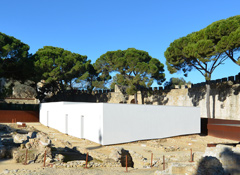 |
| foto: Petr Šmídek, 2013 |
The one hill occupied by the Castle of São Jorge is the site of the first known human settlement - dating to the Iron Age - of the place that would become the city of Lisbon, a strategic vantage point overlooking both the estuary of the River Tagus and its inland territory. The ‘Praça Nova’ of the Castle occupies an intramural promontory, enclosed by defense walls to the North and the West, and by the Santa Cruz Church, to the South, with a visual domain above the East walls over the city and the estuary.
“Language is an archaeological vehicle... the language we speak is a whole palimpsest of human effort and history.” Russell Hoban
An extensive archaeological excavation of this site, begun in 1996, uncovered remnants of its successive periods of inhabitation —Iron Age settlement, Mediaeval Muslim occupation and a Fifteenth Century Palace — and the most significant artifacts removed, protected and now exhibited at the Castle’ Museum, leaving the exposed archeological site open to an intervention of protection and musealization. This intervention addressed the themes of protection, revelation and readability of the palimpsest that any such excavation represents, with a pragmatical approach aimed at clarifying the palindromic quality of interpretation that the exposed structures suggested in their spacial distribution.
Thus, the first action was the clear delimitation of the site with a precise incision, comparable to that of a surgical intervention on a living body. A membrane of corten steel was inserted to contain the higher perimetrical surface, allowing both access and a panoramic view of the site, the materiality of these walls slowly evolving and changing over time as a living material. The same precision of cut was used in the inserted elements that allow the visitor to comfortably wander trough the site —the limestone steps, landings and seating —setting them apart from the roughness of the excavated walls. Stepping down to the site, to its simultaneously first material level and last period of occupation —the remnant pavement of the Fifteenth Century Palace of the Bishop of Lisbon —a hovering structure protects the existing mosaics, its underside covered in a black mirror that allows the visitor to see reflected the vertical perspective of the pavements that the eye level of their placement denies. Further down the site and its timeline, the necessary canopy for the protection of the Eleventh Century Muslim domestic structures and its frescoes was taken as an opportunity to reproduce, through conjectural interpretation, its spacial experience as a series of independent rooms arranged around a patio that introduced light and ventilation into an otherwise exteriorly isolated dwelling.
Professedly abstract and scenographic, the white walls that stage the domestic spatiality of the two excavated dwellings float above the visible foundations of the original walls, touching the ground on the mere six points where the evidence of the primeval limits is absent, while its translucent covering of polycarbonate and wood filters the sunlight. Underlying the whole site, the evidence of the Iron Age settlement is exposed and protected trough a self-contained volume that, in a spiraled movement, extends from the perimetrical corten walls to embrace the depth necessary to its revelation. Massive and dramatic, the volume is pierced with horizontal slits that invite the curiosity for the observation of its interior, leading the visitor around the excavated pit to the point where the view is unobstructed and both the physical and time distance of the exhibited structures is made obvious. The palimpsest of the site History is thus decoded and the possibility of its palindromic time-space reading made clear: not only trough the informational signage at the disposal of the visitor, but also, and significantly, trough the experience construed by its material protection and musealization.
João Luís Carrilho da Graça
0 comments
add comment


